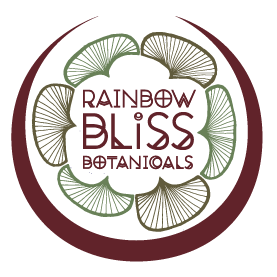Creosote: Larrea tridentata
The strikingly unique and potent aroma in the post-monsoon Sonoran Desert is attributed to the sacred, medicinal plant of Creosote, also known as Chapparal (Larrea tridentata). This shrubby desert plant clones itself to reproduce, has been used for thousands of years by Native Americans, grows in valleys and basins as well as rocky desert plateaus, and can be found only in the Sonoran, Chihuahuan, and Mojave deserts of the American Southwest and Northern Mexico.
The bond I have formed with Creosote is deep, meaningful, medicinal, emotional, and spiritual. All my childhood, I played in washes and basins covered in this resinous, ancient plant and have used it on many occasions for healing and guidance. An effective way to understand the essence of this shrub is to do an overnight cold infusion into fresh spring water. Simply chop a fresh branch of creosote (from private land as a lot of creosote in the southwest is protected), and place it in a French press with cool spring water at night, and enjoy the next day. This can be done in just an hour as well because the resins on the creosote branches and fresh leaves are strong enough to create a potent and quick cold-water infusion as well. This infusion mimics the energetics of creosote after a desert rain and also carries medicine and hydration into the body. In Kane’s writings of Herbal Medicine of the American Southwest he states, “The wonderful smell is purifying to the spirit and has the ability to cut through the deepest states of emotional self-absorption.”
On the note of absorption, another beautiful way to experience creosote is to bath with the branches or place fresh cute branches into a hot spring while soaking. This generates a magical aromatic cleansing, opens the spirit for purification, soothes the skin, and draws toxins out of the body. Personally, I have creosote on my dashboard, in my shower, and in my windowsill because it reminds me that the Earth provides, that I am a creature of the desert, that I can adapt to extreme heat and dance in the rain.
Other ways to enjoy and utilize creosote as medicine is to make tinctures and salves!
Here are some recipes I use in my Rainbow Bliss Botanicals product line that accentuate Creosote as a healing panacea:
- Melt beeswax and shea butter into infused oils with a double boiler or pyrex bowl over a pot of boiling water, stir in Vitamin E once wax and butter are melted, add essential oils last and pour into jars.
This salve has anti-fungal properties, aids in reducing redness and inflammation of acne eruptions and scars, and can be used for venomous and non-venomous insect bites. There is evidence that the external application of a creosote salve is useful in, “resolving a particular form of premalignant squamous cell carcinoma, called actinic keratosis,” which are scaly patches that arise on sun-damaged skin (Kane, 2006). Being born and raised in a 4th Generation Phoenix family, many cases of melanoma and skin cancer have occurred and I support the science that this plant has the medicine we desert beings need to heal the skin and fight free radicals!
There is much more to learn and experience with Creosote, but after being alongside this plant for over 20 years, I can claim I’m beginning to understand it. I’ve noticed the patterns that it grows in as well and have learned that creosote sends out bio-kryptic/toxic information to surrounding plants to eliminate resource/ water competition. For example, there’s a highway near my house where the surroundings are completely dominated by creosote, but on the median soil there’s Ocotillo and bursage growing. This is a prime example of how Creosote dominates an area and is one of the oldest surviving plants in the harshest of climates. When hiking around Arizona, I rub the leaves between my fingers and say a prayer of gratitude for this strong, healing, ancient, free-radical scavenger.
